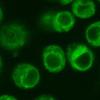Hirotaka Kanoh, Li-Li Tong, Takayuki Kuraishi, Yamato Suda, Yoshiki Momiuchi, Fumi Shishido, and Shoichiro Kurata. 2015. “
Genome-wide RNAi screening implicates the E3 ubiquitin ligase Sherpa in mediating innate immune signaling by Toll in Drosophila adults.” Sci Signal, 8, 400, Pp. ra107.
AbstractThe Drosophila Toll pathway plays important roles in innate immune responses against Gram-positive bacteria and fungi. To identify previously uncharacterized components of this pathway, we performed comparative, ex vivo, genome-wide RNA interference screening. In four screens, we overexpressed the Toll adaptor protein dMyd88, the downstream kinase Pelle, or the nuclear factor κB (NF-κB) homolog Dif, or we knocked down Cactus, the Drosophila homolog of mammalian inhibitor of NF-κB. On the basis of these screens, we identified the E3 ubiquitin ligase Sherpa as being necessary for the activation of Toll signaling. A loss-of-function sherpa mutant fly exhibited compromised production of antimicrobial peptides and enhanced susceptibility to infection by Gram-positive bacteria. In cultured cells, Sherpa mediated ubiquitylation of dMyd88 and Sherpa itself, and Sherpa and Drosophila SUMO (small ubiquitin-like modifier) were required for the proper membrane localization of an adaptor complex containing dMyd88. These findings highlight a role for Sherpa in Drosophila host defense and suggest the SUMOylation-mediated regulation of dMyd88 functions in Toll innate immune signaling.





